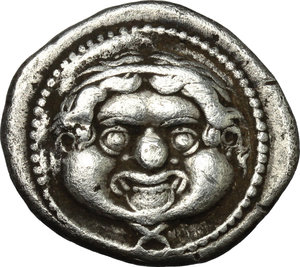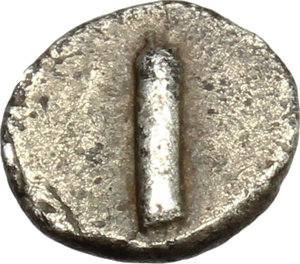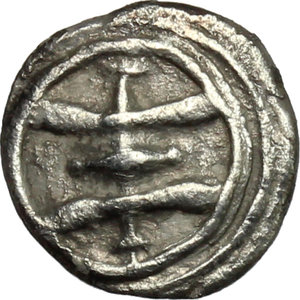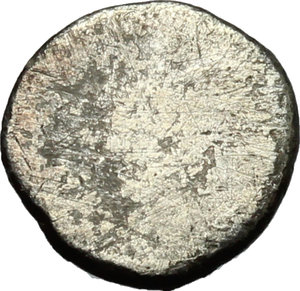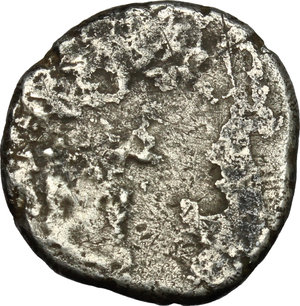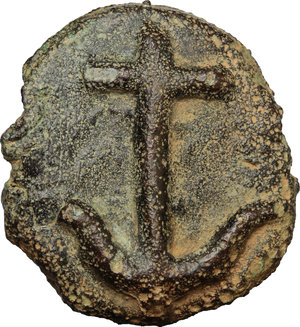Etruscan Coins from the Collection of a British Connoisseur
Artemide Aste @ 08 apr 2019
Nella prossima asta Artemide LI siamo orgogliosi di proporre un'importante collezione di monete etrusche raramente apparsa sul mercato per conservazione e rarità.
The Collection of a British Connoisseur
Presented here is the first part of a remarkable old school academic collection of a British connoisseur and Italophile, formed with care more for the rarity and significance of the coins than their beauty; however the collection also includes outstanding examples of exceptional rarity, significance and beauty. Among these, the AR Drachm (cf. no. 5) and the AR ½ Unit (cf. no. 12) of Populonia and, especially, the cast series of Tarquinii (cf. nos. 48-51); being the Quadrans Dolphin/Anchor the sixth and probably the finest recorded example, the Sextans Plough/Yoke undoubtedly the finest of the two known, and the Uncia A/Crescent-pellet the second specimen recorded.
The collection contains several new dies of various series and secures the identification to Populonia of the extremely rare metl series (cf. no. 27).
As with the Egyptians, Phoenicians and Carthaginians civilisations, the Etruscans, who called themselves Rasna, were rather slow to adopt the invention of coinage. The brief period of Etruscan coinage, with the predominance of marks of value, seems to be an amalgam that reconciles two very different monetary systems: the ‘primitive’ bronze-weighing and the so-called aes grave economy of the Italic peoples of central and southern Italy, with that of struck silver and gold issues of Greek Magna Graecia.
Italo Vecchi
The entire Etruscan struck series has been thoroughly reappraised by Italo Vecchi in Etruscan Coinage I, Milan 2012 and Italian Cast Coinage, London 2013, with reference to the forthcoming Etruscan Coinage II, dealing with Etruscan cast issues.
6: Populonia. AR Unit, late 5th century BC. D/ Eagle with closed wings standing right. R/ Large I. Unpublished in the standard references; cf. Roma Numismatics X, 2015, lots 16 and 17. AR. g. 1.05 mm. 12.00 RR. Very rare, one of four recorded example. Good metal, prettily toned. Good VF.
This is the third recorded example of an issue previously only known from two examples with the legend metl to right, off-flan on this coin, but from the same die. The ethnic: pvplana (Rix NU N.20), securely places the issue to the mint of Populonia in the 3rd century BC. The Etruscan legend metl may be connected to the Latin metallum, metalli "metal, mine, ore" as seen on some Roman coins of the mines.
Questo risulta il terzo esemplare, inedito, di un'emissione di cui erano noti due soli esemplari, certamente provenienti dallo stesso conio, con legenda a destra metl, fuori campo in questa moneta. La quale, in compenso, presenta a sinistra la nitida legenda puplana, a sua volta fuori flan nei due esemplari già noti.
L'etnico puplana (cf. Rix NU N.20) permette di assegnare con certezza questa emissione alla zecca di Populonia, nel III secolo a.C.
La legenda etrusca metl potrebbe essere messa in relazione con legende latine come MET, METAL, METALLI, presenti su alcune emissioni romane di bronzo della prima metà del II secolo d.C., emissioni cosiddette "delle miniere".
.
This is the third recorded example of a remarkable series which would seem to represent a gold As. Their extremely light weight would seem to indicate that they of a votive nature, possible as Charon’s obol. The phrase "Charon’s obol" as used by archaeologists sometimes can be understood as referring to a particular religious rite, but often serves as a kind of shorthand for coinage as grave goods presumed to further the deceased's passage into the afterlife. In Latin, Charon's obol sometimes is called a viaticum, or "sustenance for the journey”, and the placement of the coin in the mouth has been explained also as a seal to protect the deceased's soul or to prevent it from returning. Find spots in Etruria have been attested for at Blera (Bieda) in 1885 [Cimino, Baranowsky & Bezzi, 1940, 1-3] and Chiusi before 1874 [= Strozzi 524].
Questo è il terzo esemplare conosciuto di un'interessante emissione che sembrerebbe costituita da un asse d'oro. Il peso estremamente leggero e le dimensione estremamente ridotte dei tre esemplari ci fanno supporre che essi non fossero destinati a circolare come monete ma avessero una funzione votiva, forse come oboli di Caronte.
L'espressione "obolo di Caronte" usata dagli archeologi a volte può essere intesa come riferimento ad un particolare rito religioso, ma spesso vuole più semplicemente intendere monete che possano favorire il passaggio del defunto nell'aldilà. In latino l'obolo di Caronte è talvolta chiamato "viaticum", cioè sostentamento per il viaggio, e la sua collocazione nella bocca del defunto è stata interpretata anche come sigillo per proteggerne l'anima o impedirne il ritorno. Ritrovamenti in Etruria sono stati attestati a Blera (Bieda) nel 1885 (Cimino, Baranowsky & Bezzi, 1940, 1-3) e Chiusi prima del 1874 (= Strozzi 524).









